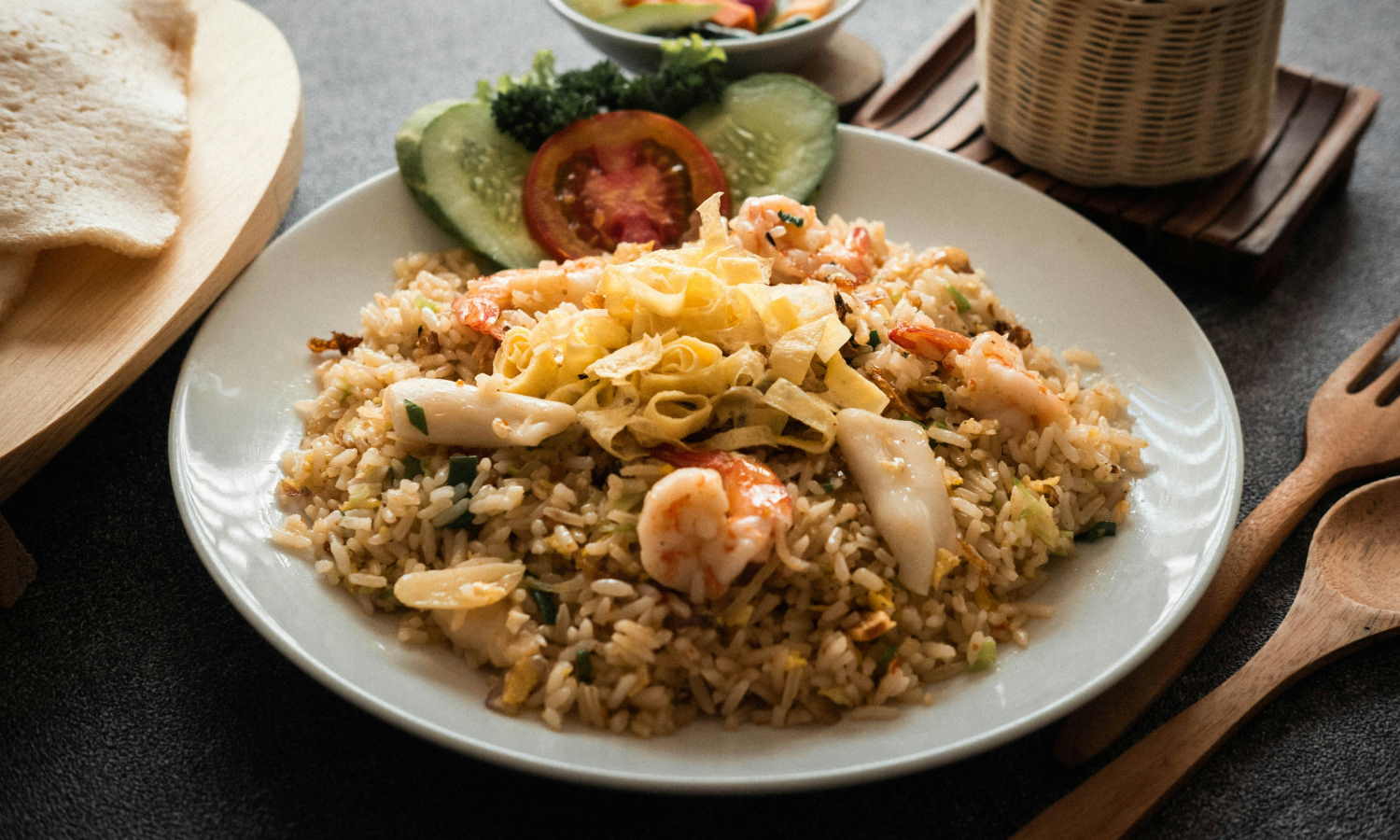With 16 regions to explore and an infinite number of local delicacies to discover and appreciate, there may not be enough time in the world to go over every Filipino dish that might strike your fancy. Fortunately, there are a number of dishes that are loved and cooked no matter where you are in the country so you can enjoy them whether you are relaxing in the white sandy beaches of Boracay, exploring the cultural landmarks and tourist hotspots of Manila, or exploring the natural wonders of Bohol and other regions in the country.
Let’s get you started with these 10 iconic Filipino dishes!
Sinigang
This Filipino dish is likely the first recommendation most locals give to tourists, especially during the rainy or cold season. This savory, slightly sour soup can be served with pork, shrimp, fish, or beef, depending on your preference. Different regions have their unique recipes, some with a preference for intense spice, others opting for purely vegetable-based versions. This ensures that even vegetarians won’t feel left out.
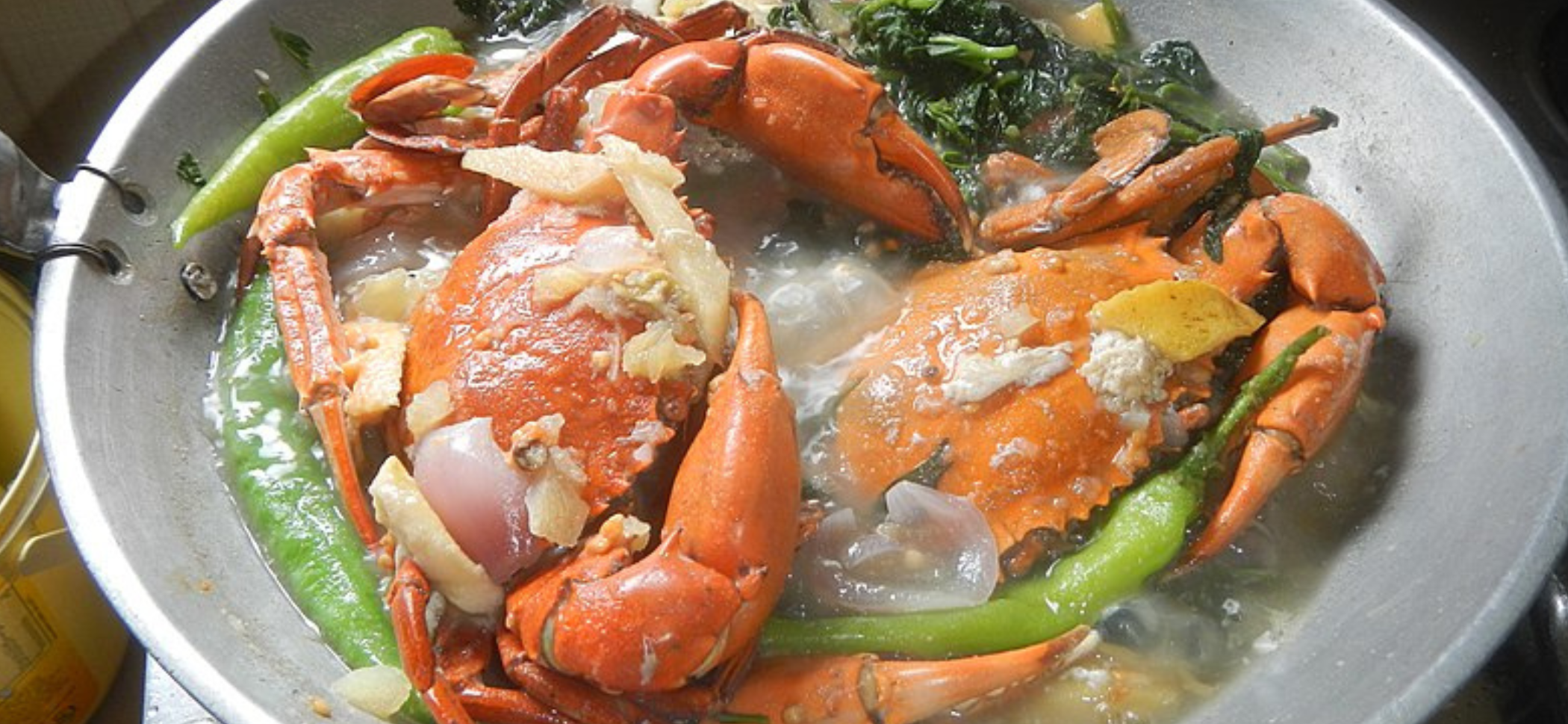
Sisig
Sisig is a national favorite enjoyed all-year-round. It’s often heavily requested by tourists who’ve had the pleasure of trying it before. The dish’s main ingredient is typically pork liver, but most restaurants serve it with pork, chicken, or beef, complete with generous helpings of onions, mayonnaise, and a fried egg over a sizzling plate. Couple this with rice, garlic rice, or java rice, and you’ll likely find your belt loosened a couple of notches from sheer satisfaction. Vegans, don’t fret – the dish can be wonderfully recreated using fried, diced tofu instead of meat. Sisig is best savored after a long day, perhaps with a cold bottle of beer or two, when all you want is to relax and indulge in something incredibly delicious.
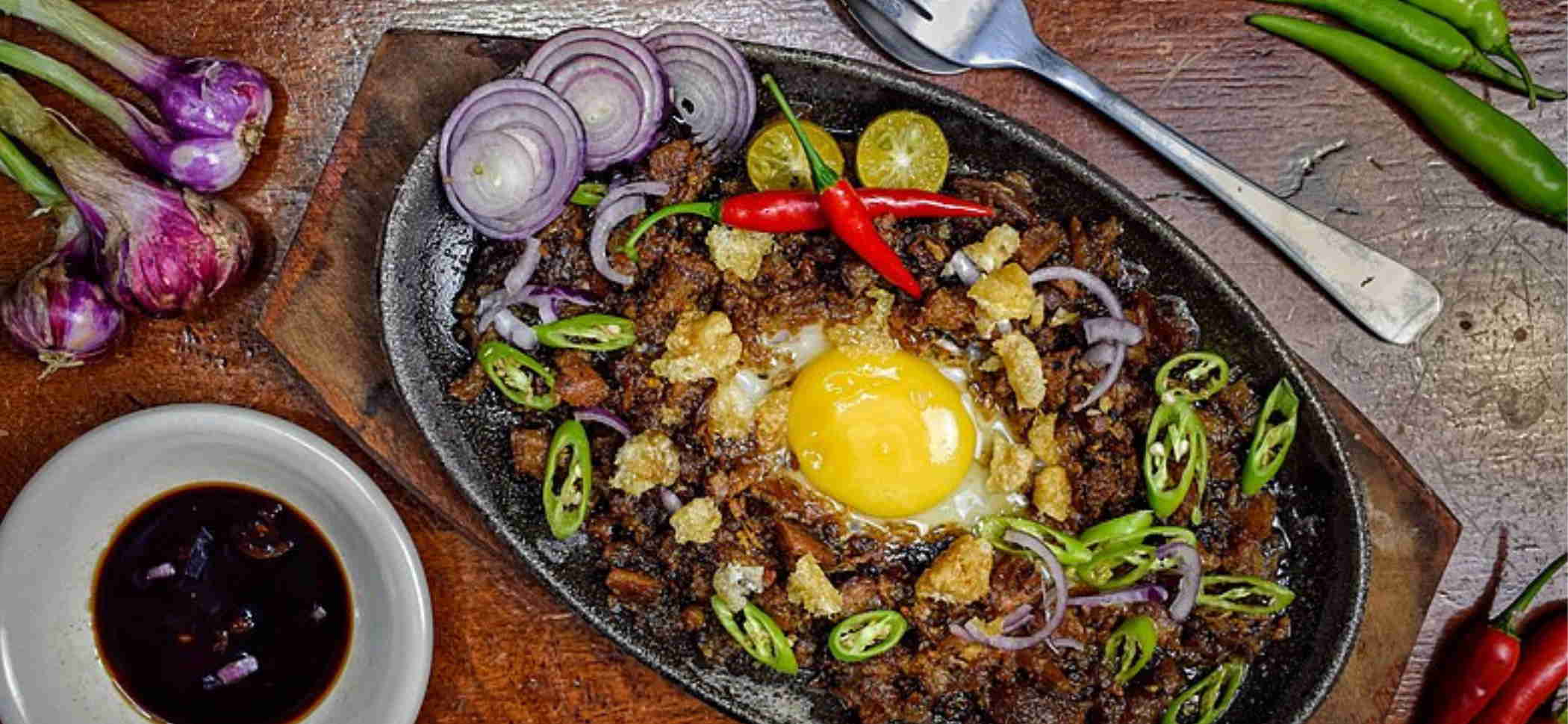
Kare kare
You may have heard a Filipino friend jokingly describe a dish made with peanut butter. More accurately, this Filipino dish uses a peanut sauce, though many Filipinos resort to peanut butter for convenience. Despite local jokes, it doesn’t taste like a stewed peanut butter sandwich. Rather, the dish resembles the Philippines’ take on ‘curry’, which influences its name and appearance. Kare kare is traditionally cooked in an earthen pot with a variety of vegetables such as cabbage, eggplant slices, and string beans. If you have a peanut allergy, it’s crucial to inform your host to avoid this dish due to its peanut content. Similarly, those with shrimp or crab allergies should be aware as some families enhance the dish’s flavor with shrimp and crab paste.
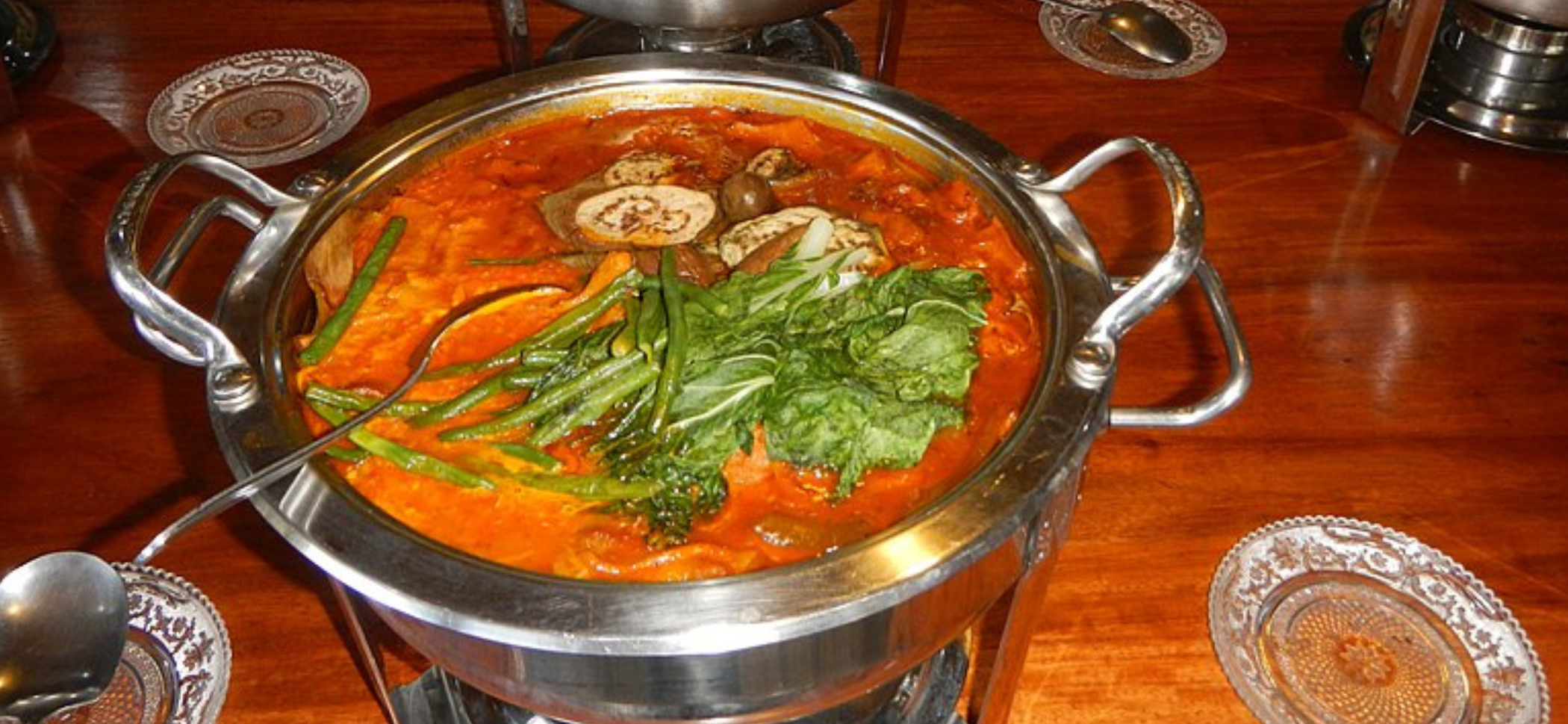
Adobo
If sisig isn’t the favorite Filipino dish of foreign tourists then it would most likely be adobo. Usually cheaper and easier to cook, adobo gets its signature flavor thanks to the addition of bay leaves into the stew, increasing the savoriness of the main ingredient of the dish: chicken, pork, beef, squid, or spinach. The presence of this spice tempers the saltiness of the soy sauce and gives the dish a mouthwatering fragrance. Cubed potatoes are usually included in adobo but most Filipinos nowadays have discovered that it is best to lightly fry the potatoes or even bake them before putting them on the adobo.
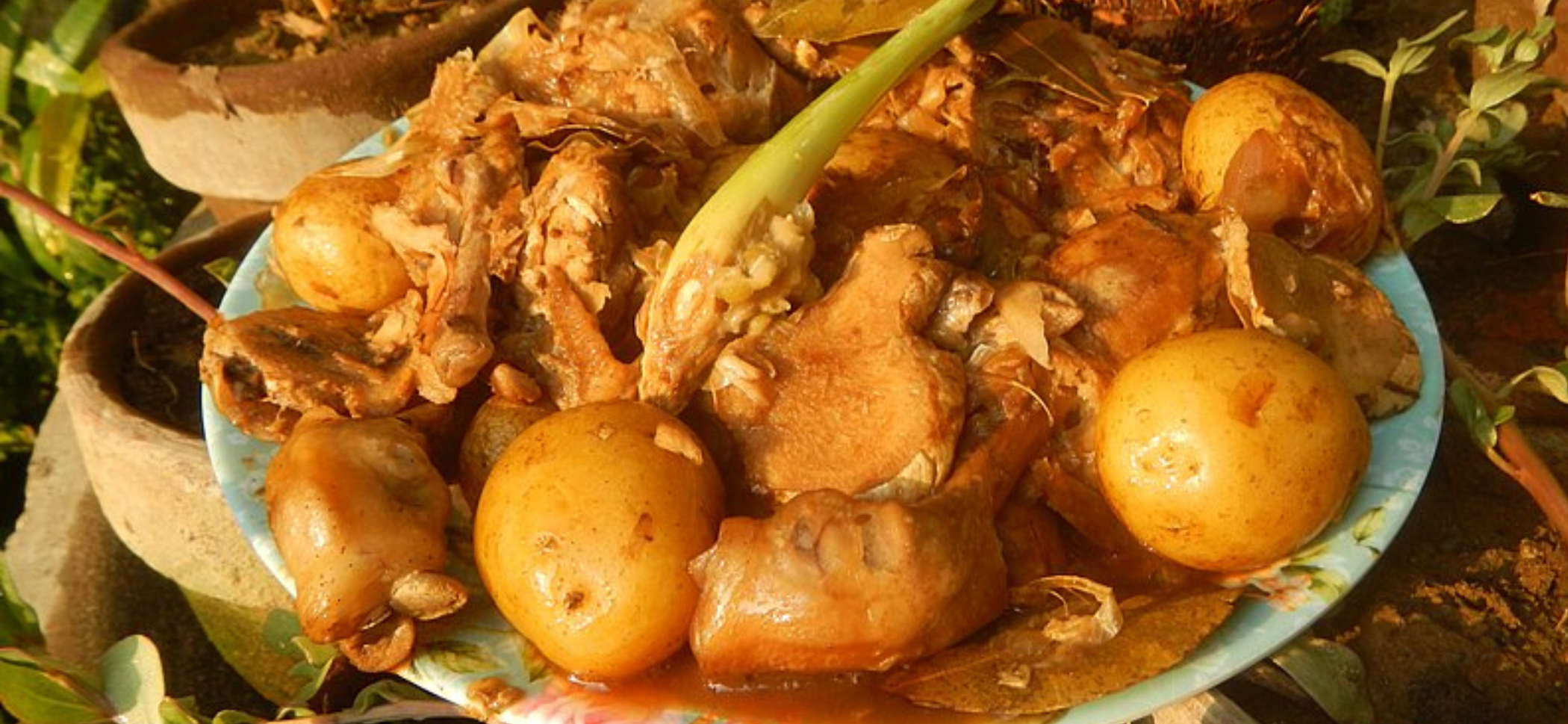
Halo-halo
No matter where you are in the Philippines, locals and other tourists will recommend that you try halo-halo. Unofficially known as the national dessert of the country, the closest dish to this is shaved ice or sherbet. However, Filipinos take it up to a whole new level by adding in more ingredients including, but not limited to, a scoop of ice cream, a spoonful of ube or purple yam, sweet jellies, coconut, rice krispies, sweetened saba banana slices, and a huge helping of evaporated milk. Since there is no set recipe on how to make halo-halo, every order from a different restaurant is bound to be unique. This dessert is more of a treat that Filipinos and tourists like to enjoy not just during the summer but also after a long day of walking and exploring the city.

Lumpia
If there was a food meant to test your sense of self control or dedication to your diet plan, this classic Filipino dish might become your greatest enemy. Although recipes may vary, this all-time favorite is made from either ground pork or beef and a mixture of diced or finely chopped cabbages, carrots, potatoes, and sometimes even bell peppers, before being wrapped in a lumpia wrapper then deep fried to a golden brown. Similar to spring rolls, nearly every household in the country has their own recipe and mixture of spices so no two servings of lumpia will ever taste the same, especially when Filipinos are adventurous towards improving their own recipes to impress guests or visiting relatives. What makes this dish great is that the meat is completely optional and you can opt to just have a vegetable-only lumpia. This can be eaten as-is like finger foods but most Filipinos eat lumpia with rice and dip them with their favorite sauce mixture.
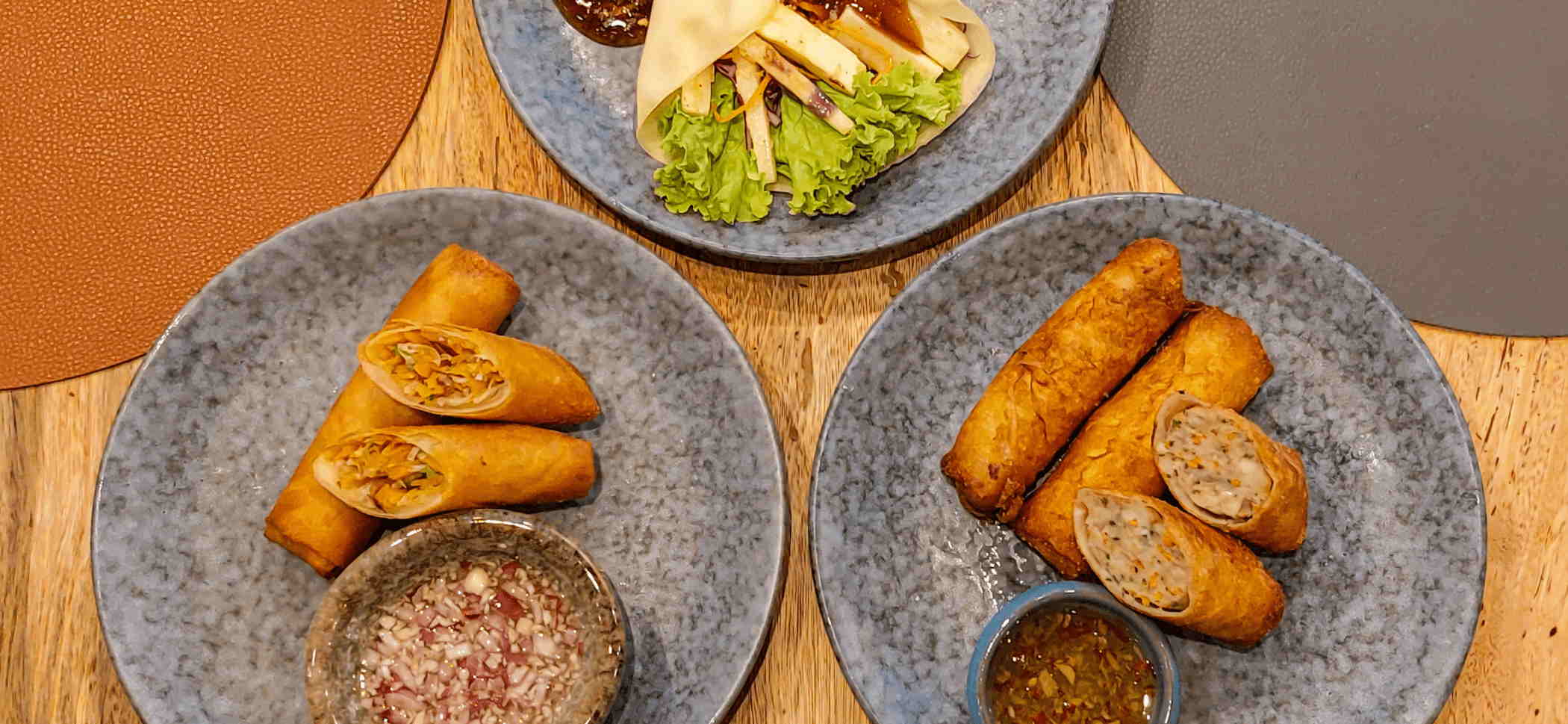
Menudo/Afritada/Mechado/Kaldereta
It’s a running joke among Filipinos that they can’t distinguish between Menudo, Afritada, Mechado, and Kaldereta, as all are tomato-based stews and look alike. However, there are key differences to keep in mind to avoid confusion, such as when a host compliments the Menudo when they specifically ordered Afritada. Each dish uses a different choice of meat: Afritada features chicken, Menudo uses pork with chopped hotdogs, and both Kaldereta and Mechado use beef or goat meat. However, Mechado is recognized by its thicker sauce, while Kaldereta incorporates liver spread into the recipe.
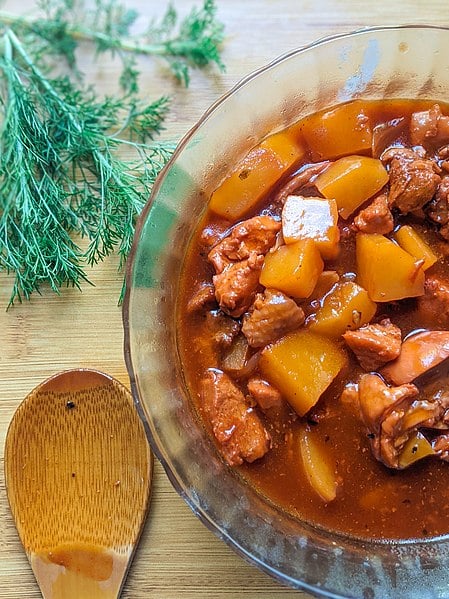
Chicken Inasal
Known as the Filipino-style BBQ, it was developed in Bacolod with a unique marinade created from coconut vinegar, local lime juice, and annatto oil. The best way to describe chicken inasal is that it’s a smoky sweet-and-sour grilled chicken with the right amount of sweetness and saltiness to it. While some restaurants/households also add soy sauce into the marinade, it is absent in traditional chicken inasal recipes, though there is no problem with using it as a dipping sauce if you want.
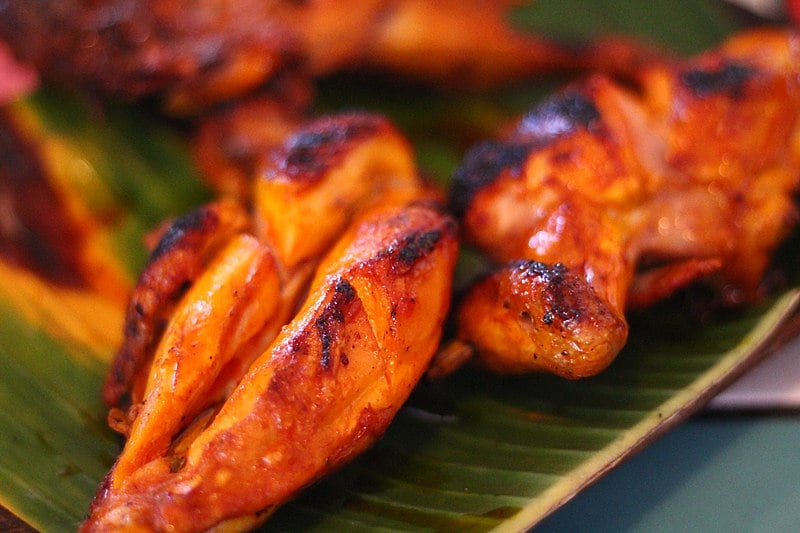
Bicol Express
While the previous dishes can be made spicy depending on your preference, none can likely compare to the heat you’ll experience with Bicol Express, a dish specifically designed to reach peak deliciousness at its spiciest. Bicol Express is crafted from pork belly, coconut milk or cream, shrimp paste, and a significant amount of chili. Though it’s usually served mild, be prepared for an unforgettable, fiery experience if you’re fortunate enough to try the real deal in Bicol. The locals there certainly don’t hold back on the spice and it might be too much for you!
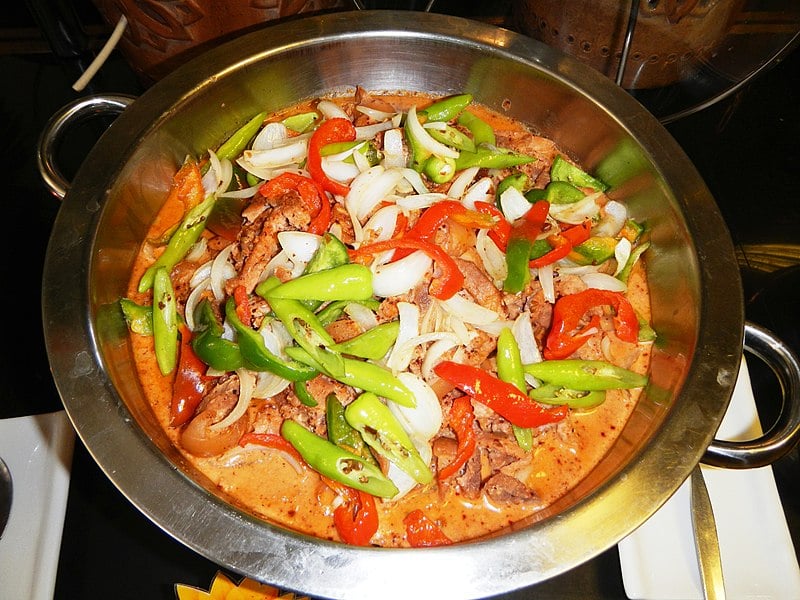
Lechon
Lechon is one of the best dishes you can sample from the Philippines, especially during the ‘fiesta’ season, which typically falls in or near the end of summer. Lechon is a whole suckling pig, slowly roasted over hot coals until its skin turns incredibly crunchy and its fat tenderly melts in your mouth. The secret marinade used is so exquisite that it leaves you wishing for a bigger appetite and belly. Cebu, considered the heart of the lechon-making industry, is the ideal place to try this dish. Here, numerous family recipes have earned both regional and national recognition. For those in Manila, La Loma in Quezon City is hailed as the Philippines’ lechon capital, where you can enjoy this mouth-watering delicacy without needing a plane ticket to Cebu.
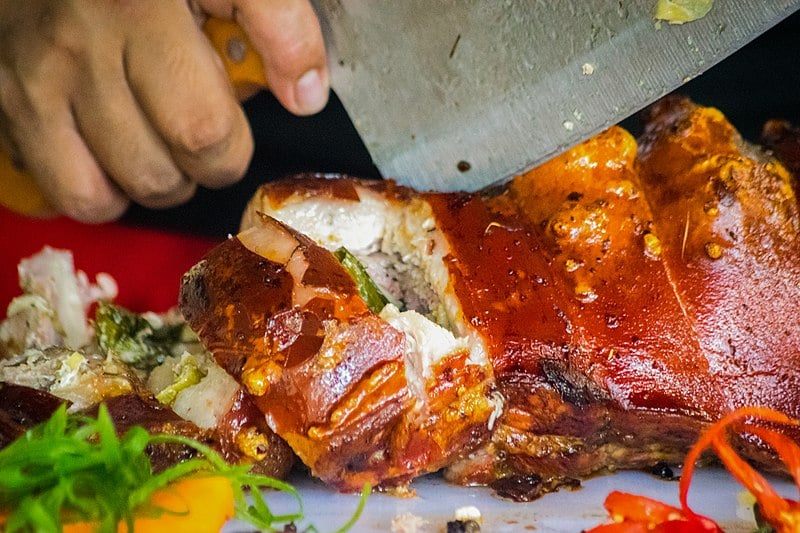
Lechon Belly, by Micluna, licensed under CC BY-SA 4.0

